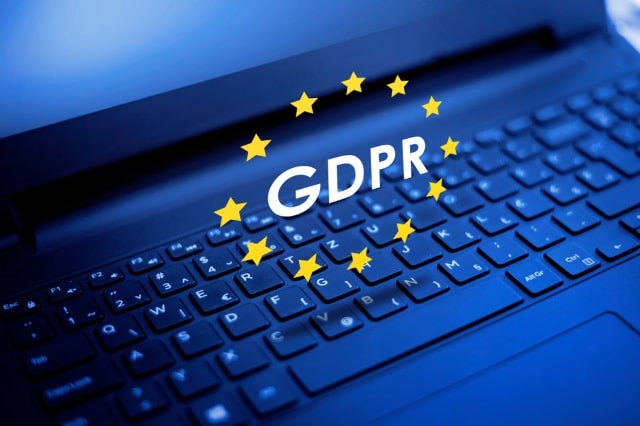
Regulation, compliance, and security always entwine themselves into modern day discussions around the latest innovations and technological advancements. Most recently, the fanfare around AI has quickly given rise to conversations about how it is impacting companies’ ability to comply with the General Data Protection Regulation (GDPR).
GDPR demands that companies stick within data guardrails, yet 100 percent compliance can often seem like a thin tightrope on which companies must balance. Fortunately, various technologies exist that can help with this, such as Data Loss Prevention (DLP).
Where GDPR focuses on the privacy of data and the guidelines for collection, processing, and storage, DLP provides the tools, processes, and policies to detect and prevent unauthorized access or transmission. Simply put, GDPR and DLP go hand in hand with one another.
This article will discuss the core principles of GDPR, how the latest technological advances can impact compliance, the risks this creates, and how implementing the right tools can help companies ensure that they remain compliant.
The core principles of GDPR are being challenged by new technology
Seven core principles form the foundation of GDPR, which represents the general principles for privacy. All the data processing and data protection requirements set forth by GDPR are tied to one or more of these principles:
- Lawfulness, fairness, and transparency: The collected data cannot be used for any illegal purpose and can only be collected when necessary guidelines are met.
- Purpose limitation: Data subjects must understand why they are being asked for personal information and how it will be used by the collecting organization.
- Data minimization: Data controllers need to collect the minimum amount of data to serve their purpose.
- Data accuracy: Organizations must implement processes that ensure the accuracy of the data they collect and process.
- Storage limitation: Personal data should only be stored for the length of time required to fulfil the purposes of the data controller — keeping it any longer is non-compliance.
- Integrity and confidentiality: Appropriate security measures must be in place to restrict the unauthorized use of personal data through data breaches and ransomware. Data must also be recoverable if lost or destroyed.
- Accountability: There must be accountability from entities processing personal data.
While new technologies like AI and big data are not explicitly mentioned within GPDR mandates, many of its provisions remain relevant, and some are indeed challenged by the new ways of processing personal data that these technologies enable.
Consequently, there is a growing tension between GDPR’s core principles, such as ‘purpose limitation’ and ‘data minimization’, and the full deployment of AI and big data. The latter entails the collection of vast quantities of data concerning individuals and their social relations and the processing of such data for purposes that were not fully determined at the time of collection. Manually tracking and deleting such large quantities of data can also be extremely difficult, creating additional ‘storage limitation’ and ‘integrity and confidentiality’ challenges.
Non-compliance can have significant consequences
It’s important to note that GDPR isn’t merely a set of guidelines but a legally binding regulation that demands businesses prioritize compliance at all times. Implementing new technologies like those mentioned above without due care and attention can quickly result in non-compliance, leading to serious and costly consequences. For example, failing to install the necessary security controls alongside new technologies may leave businesses much more vulnerable to data breaches.
What’s more, the cost of a data breach is skyrocketing. According to the latest IBM Cost of a Data Breach report, it reached $4.45 million in 2023, rising to $4.9 million for attacks carried out by malicious insiders.
Should a data breach occur, GDPR regulations are very clear about what businesses need to do in order to remain compliant. In most scenarios, the relevant authority must be notified within 72 hours of the breach being discovered. Businesses must also be able to describe the nature of the breach (along with categories and number of records affected), the likely consequences of the breach, and the measures taken or proposed to address the data breach. Failure to do any of this will result in non-compliance, which can leave businesses facing fines of up to 4 percent of their annual turnover.
DLP enables businesses to maintain compliance
Fortunately, there’s a growing number of data security solutions that can help businesses of all sizes maintain compliance with GDPR, even when embracing new technology. One of the most effective is DLP, which gives companies the ability to enforce their data handling policies from almost anywhere. Below are three of the ways it enables this:
1. Robust Control of Sensitive Data Access and Egress
DLP provides comprehensive tools to control access to and prevent the unauthorized egress of sensitive data from an organization. By utilizing real-time monitoring and blocking mechanisms, DLP helps prevent both accidental data leaks and deliberate data exfiltration attempts. DLP can enforce data handling policies across geographical boundaries, ensuring sensitive information is only accessed by authorized personnel and that its transfer complies with corporate and regulatory standards, regardless of the user’s location.
2. Proactive Discovery and Protection of Sensitive Data
DLP tools are critical in identifying and securing sensitive data stored on corporate devices and within cloud environments. By scanning and analyzing data at rest, in use, and in motion, DLP solutions can detect sensitive information such as personally identifiable information (PII), intellectual property, or financial data. Once identified, the data can be automatically protected through encryption, access controls, or other remediation actions prescribed by policy, in turn minimizing the risk of exposure on any platform.
3. Evidence of Policy-Based Control for Compliance Audits
Implementing a DLP solution equips companies with a verifiable, policy-based control system to demonstrate compliance with data protection regulations, such as GDPR, to auditors. DLP provides detailed logs and reports of all data handling activities, illustrating how sensitive data is detected, monitored, and protected. These capabilities ensure that companies can swiftly respond to potential data exposures and provide audit trails that prove adherence to both internal and external data security mandates.
In the fast-paced business landscape, where powerful new technologies are constantly emerging, maintaining compliance with regulations such as GDPR is not an easy task. However, the penalties for failing to do so are severe. Fortunately, businesses don’t have to go it alone. Solutions like DLP provide unparalleled insight into the flow of data around a company’s network and give security teams and admins the tools they need to manage/control it effectively, preventing non-compliance and the trouble it brings. Who wouldn’t want that?
Image credit: Nikola Stanisic / Shutterstock

John Stringer is Head of Product at Next DLP.


